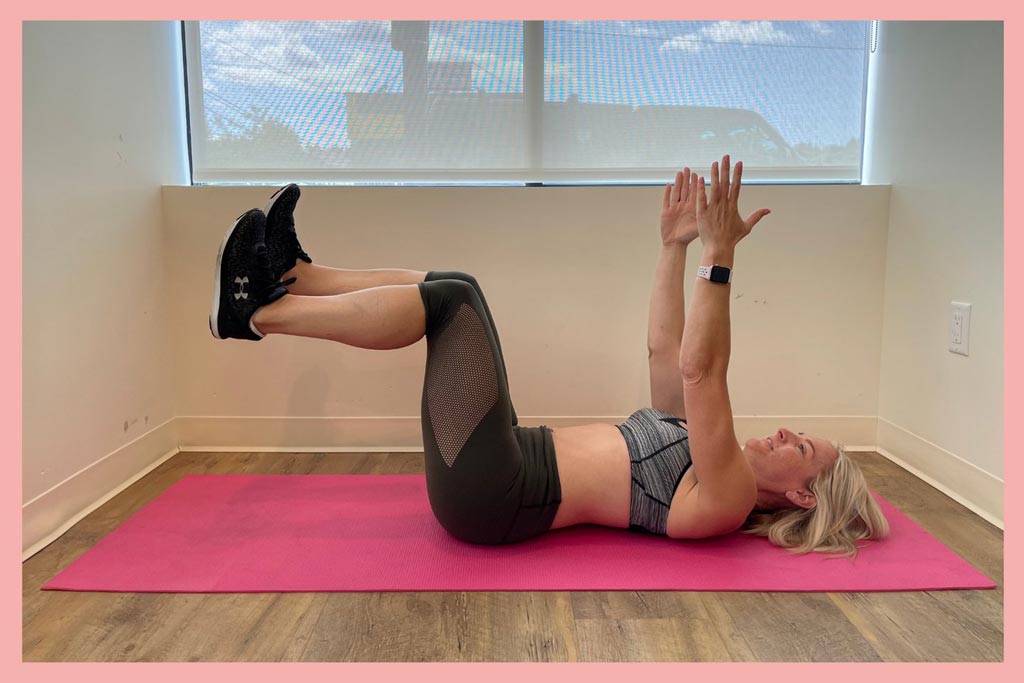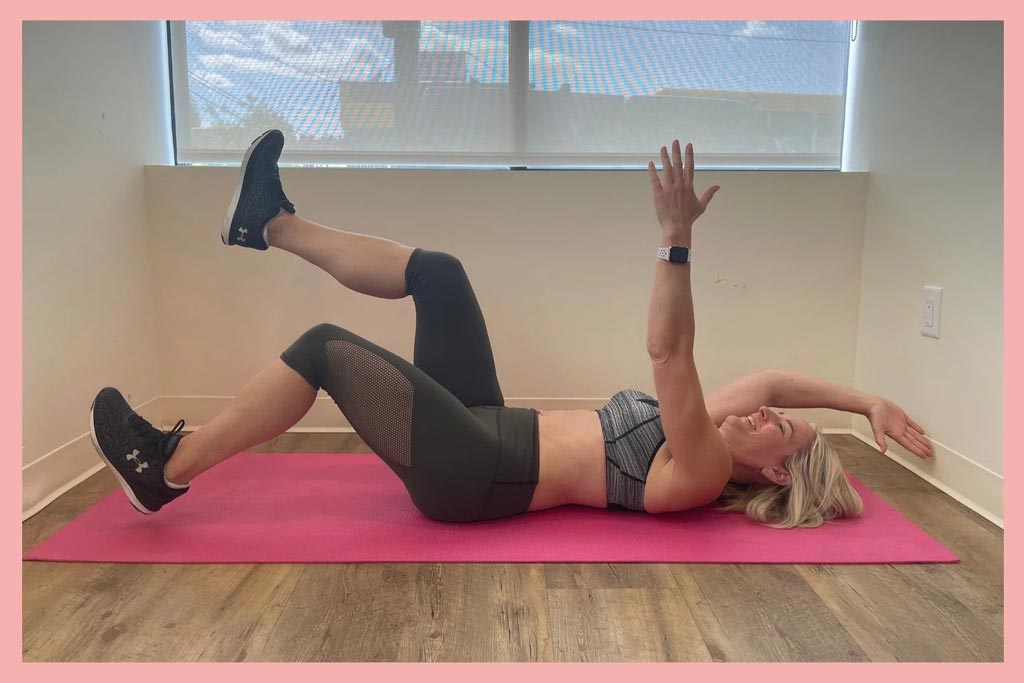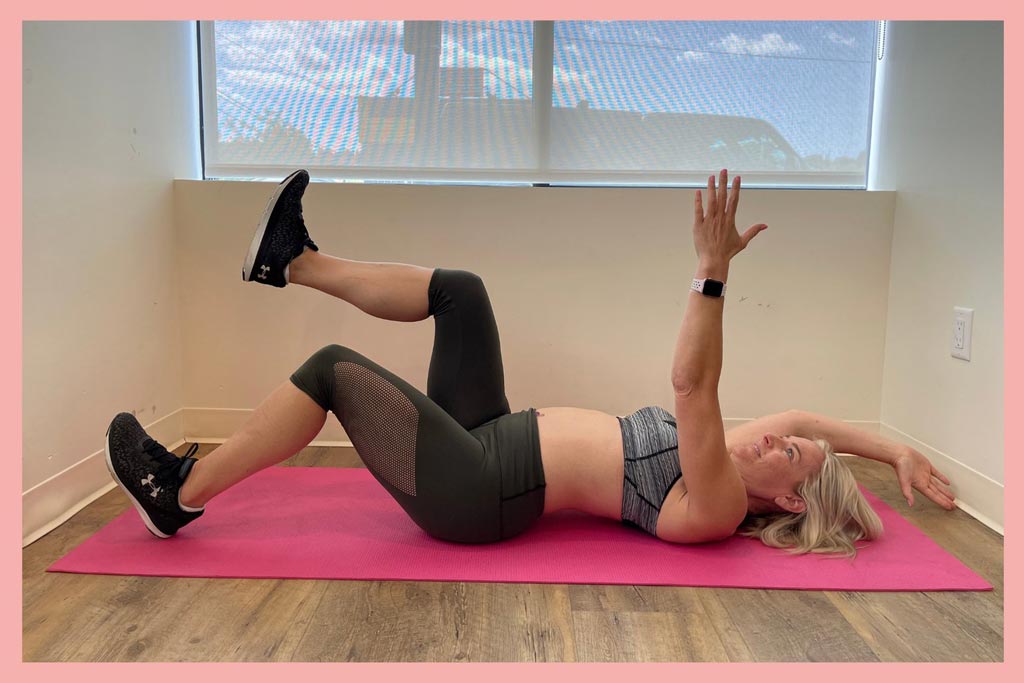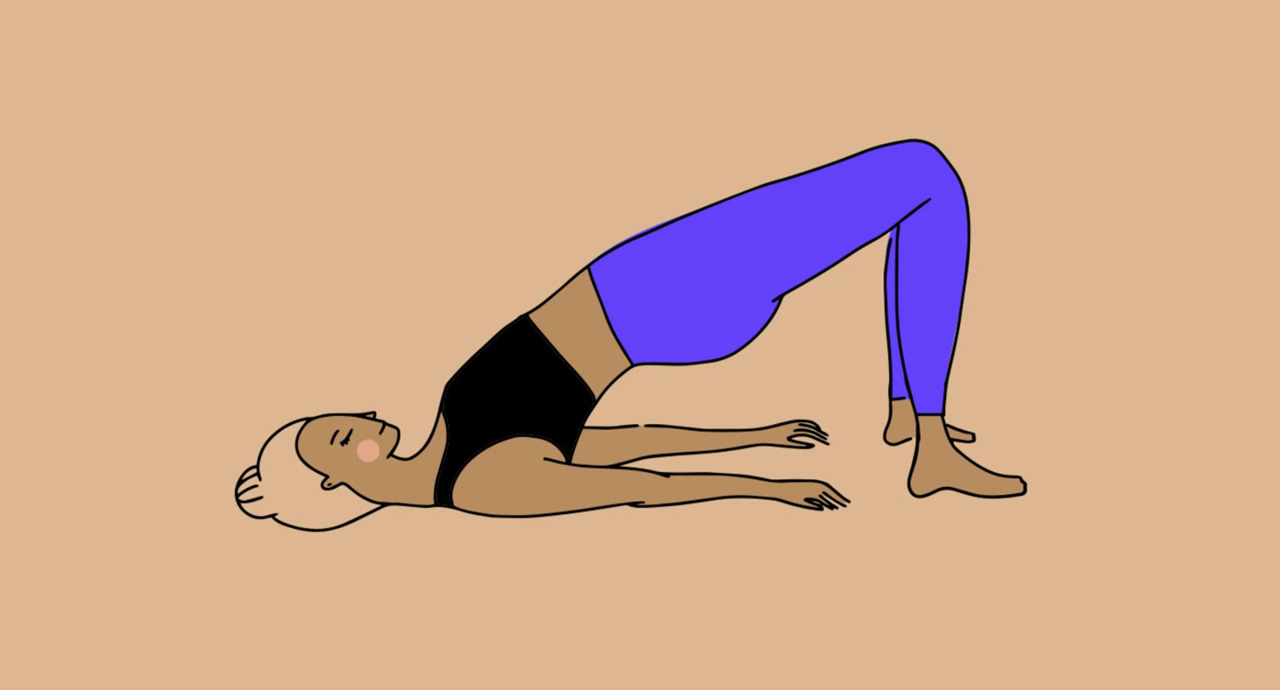(Image by Intimia)
It’s usually not until we experience physical symptoms, inhibiting our day-to-day movement, that leads us to investigate the cause only to learn so much more about our body!
I want to share with you how pelvic floor muscle training promotes more efficient full body muscle recruitment, and how this permits the body to work smarter, not harder, to achieve strength and tone.
First, we need to understand the role of the inner core group of muscles. Weak or inflexible core muscles can impair how well your arms and legs function. Taking the power from many of the moves you make (Harvard Health Publishing, January 2012).
Common symptoms of a weak inner core, experienced at any stage of life, can be a result of pelvic floor dysfunction.
Common Signs and Symptoms may include:
- Back and hip pain
- Leaking a little or a lot unexpectedly
- Feeling the urge to go pee sometimes or often
- Feeling the pressure ‘down there’
- A weak feeling midsection
The Inner Core
Let’s have a closer look at what constitutes pelvic function. The core muscles can be divided into two functional units, the inner core and the outer core. Among their many functions, the two units work together to stabilize, anticipate and create movement.

Composed of the pelvic floor, diaphragm, transverse abdominals (TvA) and multifidus muscles. The inner core is like a canister and has the following responsibilities:
🍉 Maintain stability to the spine
🍉 Anticipate movement
🍉 Hold in pelvic organs (bladder, uterus, rectum)
🍉 Maintain continence and manage voiding
🍉 Sexual Health
This inner core team works best with ideal alignment (posture) and in coordination with breath. As you inhale the diaphragm contracts down while the pelvic floor, TvA, and multifidus lengthen and relax. As you exhale, the diaphragm relaxes while the pelvic floor, TvA and multifidus shorten and contract.
The Outer Core
The outer core is composed of muscles intended for creating movement. This includes internal obliques, external obliques, rectus abdominis, erector spinae outer layer.
Pelvic Stabilizing Muscles
It’s important to note here some key muscles surrounding the pelvis that support stability and movement. These include glutes (buttocks), hamstring (back of upper legs), and psoas (hip flexors) just to name a few.
Importance of The Inner Core
The inner core can impact quality of life in relation to ease of movement. Weakness or tension of the inner core can create muscular imbalances. Outer core and pelvic stabilizing muscles overcompensate, pull on the pelvic joints and spine, and cause pain.
Resolving these issues can be achieved with the help of pelvic floor physical therapy and pelvic floor exercise rehabilitation.
And the great news is … Learning to effectively recruit your pelvic floor and inner core muscles in exercise makes it easier on the rest of the muscles, and achieves better success at building full body strength and tone!
Recruiting the Inner Core in Exercise
Let’s look at the abs. I like to use the Dead Bug as an example of how you can effectively recruit the inner core to help flatten the tummy and develop the rectus abdominis.


Step 1 – Know Your Cues:
This is where the pelvic floor physical therapy and pelvic floor exercise rehabilitation are helpful. Knowing if you have an overactive pelvic floor or a weak pelvic floor helps determine the right visualization and activation cures you need to recruit the inner core muscles.
Here’s one example:
- Inhale feeling ribs globally expand
- Exhale and think about picking up a blueberry from the anus, vagina, lifting them in, followed by bringing hip bones together
This is a cue for someone who has learned awareness of contracting their muscles and does not have overactive pelvic floor muscles.
In watching an individual incorporate these cues in movement, there should be no visible evidence of the Kegel, like squeezing of the glutes, tilting of the pelvis, bearing down on the ribs, or pressing the low back into the floor.
Step 2 – Know Your Movement Progression
The dead bug has us moving the opposite arm and leg out and in during the exhale. This load bearing action on the inner core muscles increases the intra-abdominal pressure in the abdomen. Being able to manage this pressure is the key to success.
Common clues the inner core cannot manage this load include:
- The low back lifts off the floor typically right at the start of the limbs moving
- Pelvis tilts lifting the back away from the floor
- The ribs flare up to the ceiling
- The belly domes
- There’s a bulge all along the centre of the abdominals, or in a specific region as above or below the belly button

When the inner core can progressively manage the load of the dead bug movement, you’re on your way to building a functionally strong core!
Step 3 – Involuntary Activation of the Inner Core
During the retraining stage for the inner core function, we voluntarily contract the pelvic floor muscles (Kegel). However, the muscles have memory and soon re-learn to engage and stabilize the body in anticipation of movement and in coordination with breath.
So, we don’t have to do endless Kegels on every repetition of a movement. Rather, the next stage is to exhale on the exertion part of the movement to trigger muscle action.
Eventually, we won’t need to consistently coordinate breath with each repetition, as the inner core can manage increased load in non-optimal movement patterns.
Strong core muscles make it easier to do most physical activities (Mayo Clinic, August 2020), including common exercises found in your workouts. Squats, lunges, single leg strength, deadlifts, overhead lifts, bent over rows … literally every exercise! Why? Because, with a stable strong inner core, and hence mid-section, the superficial muscles throughout the body work more efficiently and aren’t struggling against instability and imbalances.
The result, is a body more efficiently capable of achieving fitness goals in strength and tone!
Krista Dennett
🍉 Pelvic Floor Exercise Specialist & Physiotherapy Support Worker
Bump Physio & Co is a community of health care providers dedicated to changing the way pelvic health and obstetrical services are delivered. Our two clinics locations are Port Moody and Langley BC, where we treat beyond the Bump and welcome clients from all stages and phases of life! Our team has advanced training in Pelvic Health, Orthopedics, Obstetrics, Clinical Pilates, and Active Rehabilitation.
Follow along on our socials @bumpphysio to keep updated on all that is going on in the Bump Community, and for more information about how we can help YOU!
Citations
2012, Jan 24. Harvard Health Publishing Harvard Medical School. Retrieved from: https://www.health.harvard.edu/healthbeat/the-real-world-benefits-of-strengthening-your-core
2020, Aug 29. Mayo Clinic Healthy Lifestyle Fitness. Retrieved from: https://www.mayoclinic.org/healthy-lifestyle/fitness/in-depth/core-exercises/art-20044751
